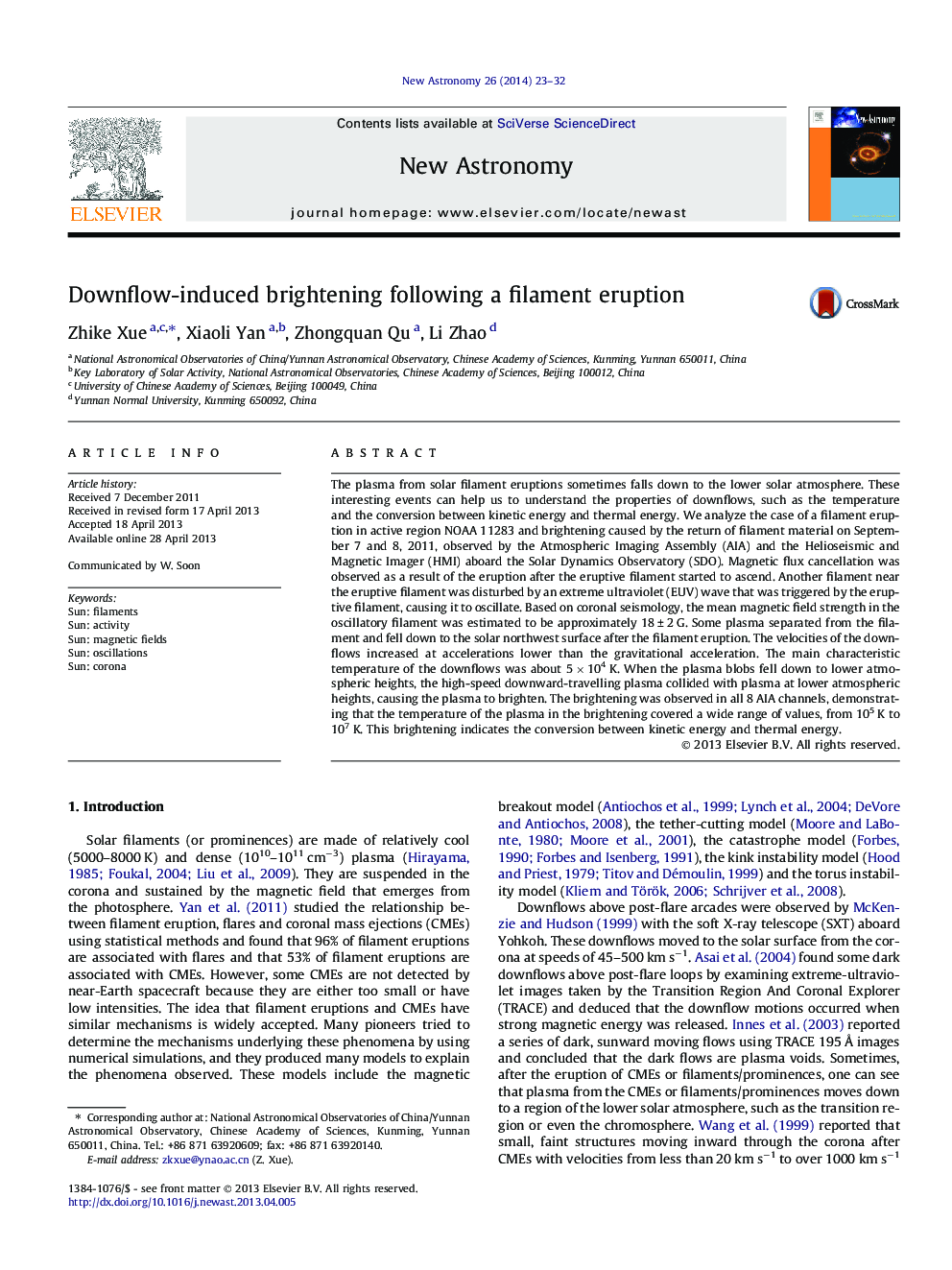| کد مقاله | کد نشریه | سال انتشار | مقاله انگلیسی | نسخه تمام متن |
|---|---|---|---|---|
| 8141508 | 1523752 | 2014 | 10 صفحه PDF | دانلود رایگان |
عنوان انگلیسی مقاله ISI
Downflow-induced brightening following a filament eruption
ترجمه فارسی عنوان
روشنایی ناشی از جریان پس از یک فوران رشته ای
دانلود مقاله + سفارش ترجمه
دانلود مقاله ISI انگلیسی
رایگان برای ایرانیان
کلمات کلیدی
خورشید: رشته، خورشید: فعالیت، خورشید: میدان مغناطیسی، خورشید: نوسان، خورشید: کرونا،
موضوعات مرتبط
مهندسی و علوم پایه
فیزیک و نجوم
نجوم و فیزیک نجومی
چکیده انگلیسی
The plasma from solar filament eruptions sometimes falls down to the lower solar atmosphere. These interesting events can help us to understand the properties of downflows, such as the temperature and the conversion between kinetic energy and thermal energy. We analyze the case of a filament eruption in active region NOAA 11283 and brightening caused by the return of filament material on September 7 and 8, 2011, observed by the Atmospheric Imaging Assembly (AIA) and the Helioseismic and Magnetic Imager (HMI) aboard the Solar Dynamics Observatory (SDO). Magnetic flux cancellation was observed as a result of the eruption after the eruptive filament started to ascend. Another filament near the eruptive filament was disturbed by an extreme ultraviolet (EUV) wave that was triggered by the eruptive filament, causing it to oscillate. Based on coronal seismology, the mean magnetic field strength in the oscillatory filament was estimated to be approximately 18 ± 2 G. Some plasma separated from the filament and fell down to the solar northwest surface after the filament eruption. The velocities of the downflows increased at accelerations lower than the gravitational acceleration. The main characteristic temperature of the downflows was about 5 Ã 104 K. When the plasma blobs fell down to lower atmospheric heights, the high-speed downward-travelling plasma collided with plasma at lower atmospheric heights, causing the plasma to brighten. The brightening was observed in all 8 AIA channels, demonstrating that the temperature of the plasma in the brightening covered a wide range of values, from 105 K to 107 K. This brightening indicates the conversion between kinetic energy and thermal energy.
ناشر
Database: Elsevier - ScienceDirect (ساینس دایرکت)
Journal: New Astronomy - Volume 26, January 2014, Pages 23-32
Journal: New Astronomy - Volume 26, January 2014, Pages 23-32
نویسندگان
Zhike Xue, Xiaoli Yan, Zhongquan Qu, Li Zhao,
